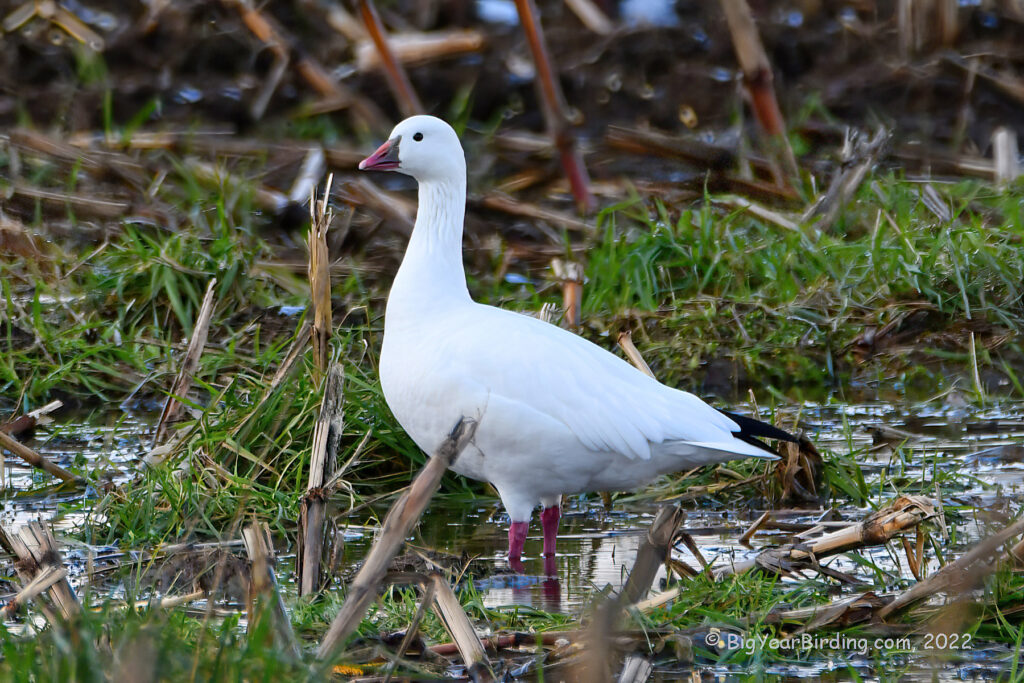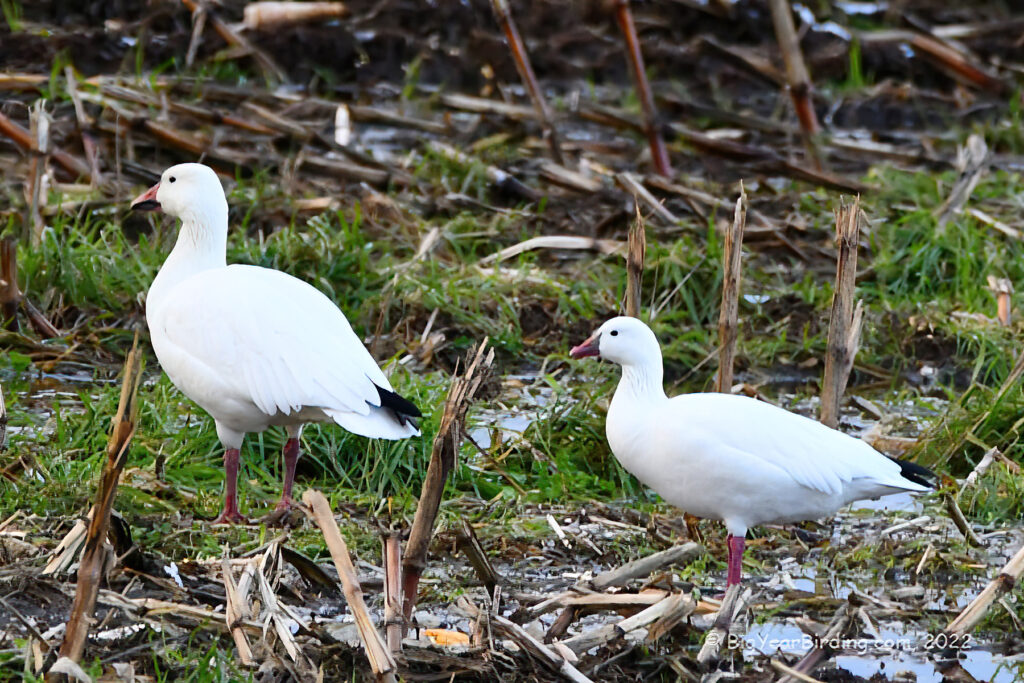
The Ross’s Goose (Chen rossii) is a small, white goose that is found in North America. This goose is one of the smallest in the genus Chen, and it measures between 20-25 inches in length with a wingspan of 41-46 inches. They are relatively lightweight, weighing only 2-4 pounds.

One of the most distinguishing field marks of the Ross’s Goose is its small size and round head, which is smaller than that of a Snow Goose. Additionally, they have a short bill that is pink at the base and black at the tip. In flight, their wings are relatively short and triangular, and they have a distinctive “U”-shaped white band at the base of their black tail feathers.
Ross’s Geese breed in the high Arctic regions of North America and migrate southward to winter in the southern United States and Mexico. They follow a similar migration path as the Snow Goose, which is from their breeding grounds in Canada, across the central United States, and into Mexico. They generally begin their southward migration in September and October, and return northward in March and April.
During migration, Ross’s Geese are known to form large flocks that can consist of thousands of individuals. They also frequently associate with other goose species such as Snow Geese, and it can be difficult to distinguish them from one another. However, the Ross’s Goose has a higher-pitched call than the Snow Goose, and its flight pattern is more erratic.

In recent years, the population of Ross’s Geese has been increasing, and they are now considered a species of “least concern” by the International Union for Conservation of Nature. However, hunting regulations have been put in place to ensure that the population does not become over-harvested. Overall, the Ross’s Goose is a fascinating species with a unique migration pattern and distinctive field marks.
